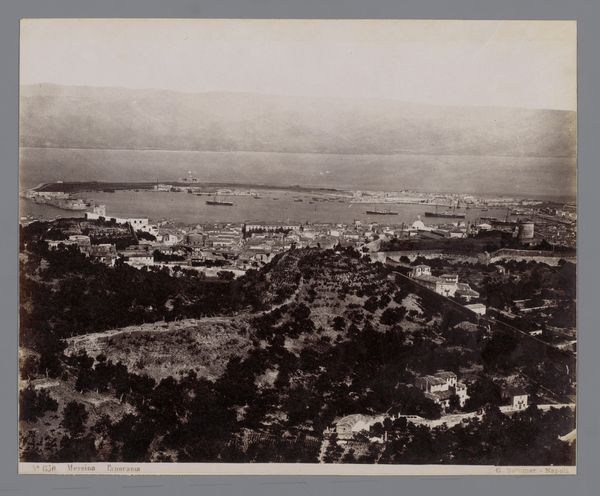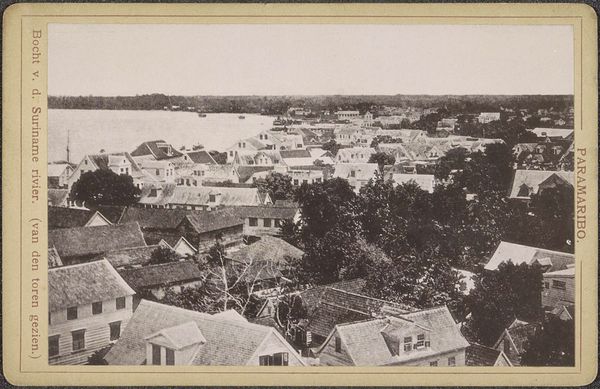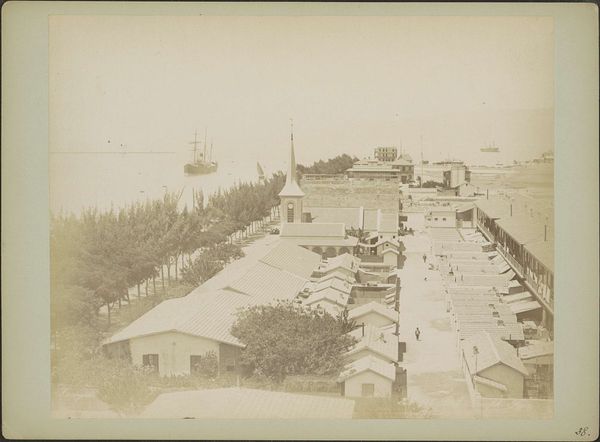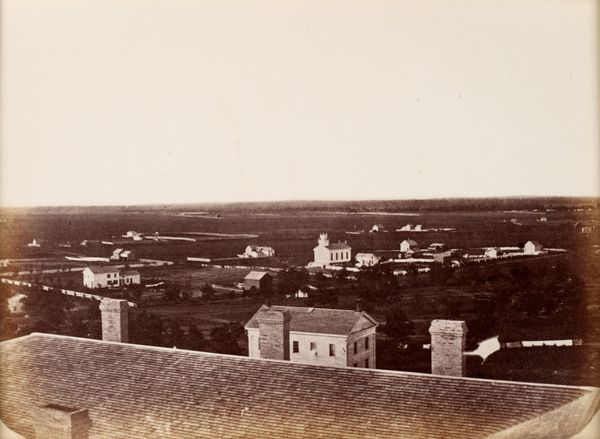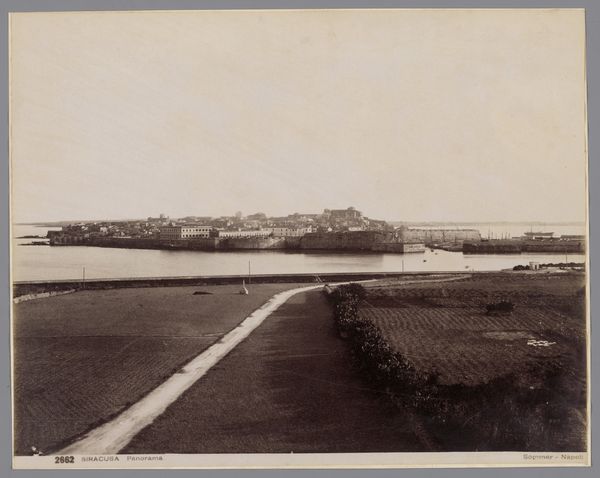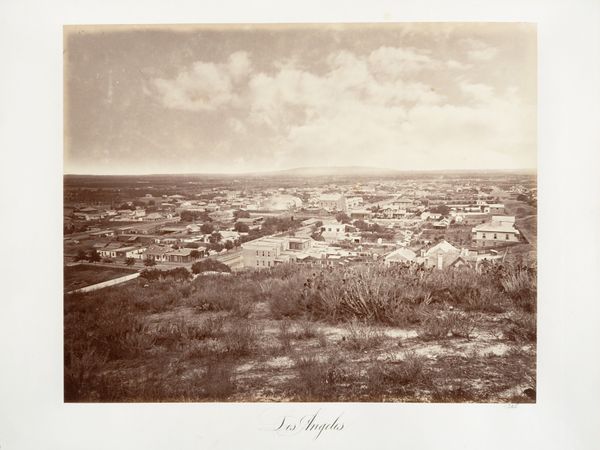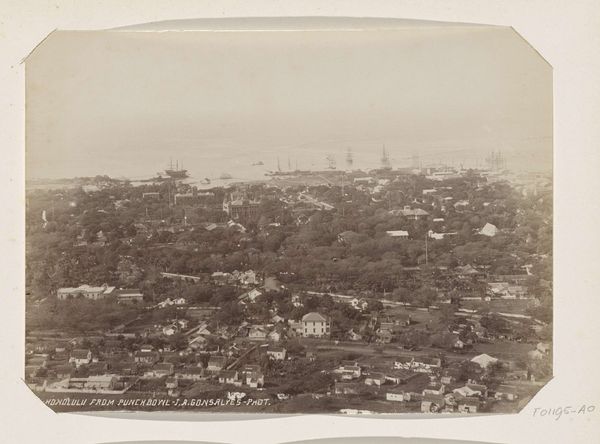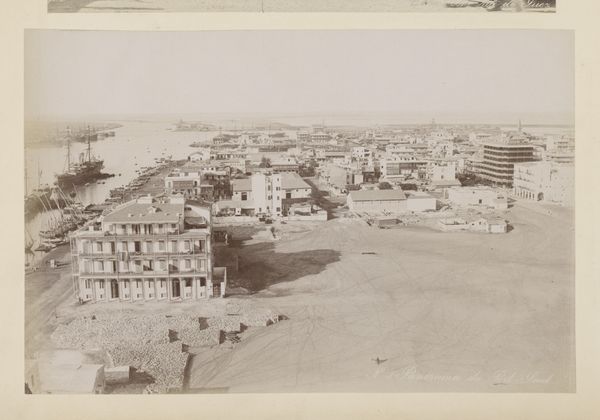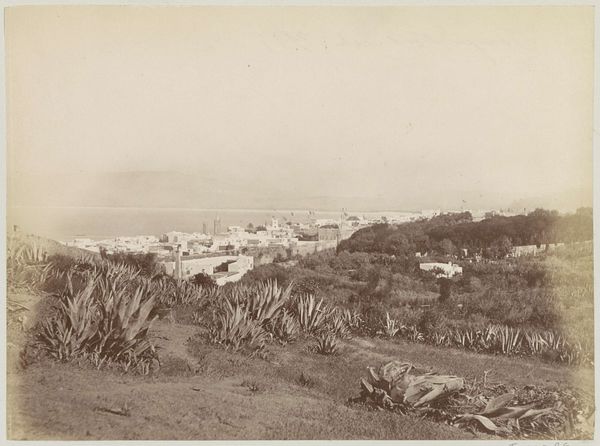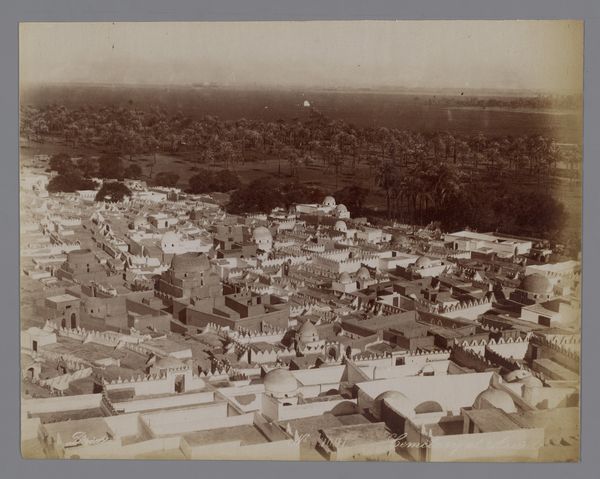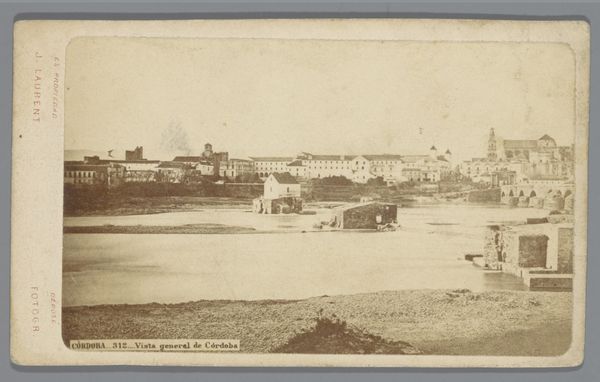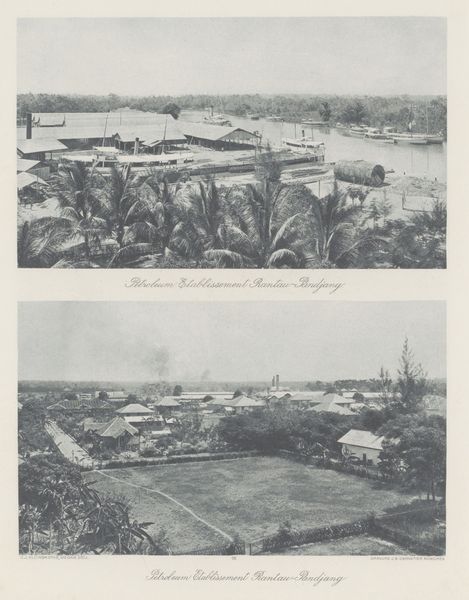
photography
#
landscape
#
charcoal drawing
#
photography
#
cityscape
Dimensions: height 119 mm, width 202 mm
Copyright: Rijks Museum: Open Domain
Editor: This photograph, "Gezicht op Lourenço Marques" from 1904, credited to Joseph Lazarus, gives us this fascinating glimpse of a coastal city. There's almost a sepia tone, which makes it feel like stepping back in time. What strikes me is the contrast between the clearly fortified architecture in the foreground and the bustling port beyond. What do you see in this piece? Curator: Well, seeing Lourenço Marques, now Maputo, through Lazarus’s lens offers a chance to reflect on the public role of imagery in shaping colonial narratives. It prompts us to consider how European photographers contributed to the construction of the colonial "gaze." Notice the careful composition, how the "civilized" fortress overlooks the presumably "undeveloped" city, almost claiming ownership over the landscape. Doesn't that resonate with how colonial powers visually asserted their dominance? Editor: It absolutely does. It’s hard to ignore the implications once you point it out. The fortress, positioned so prominently, feels less about protection and more about projection. Do you think that the photographer, Lazarus, consciously chose that viewpoint for that reason? Curator: The intention of the photographer is always complex and perhaps unknowable, but the image's visual language speaks volumes about the power dynamics inherent in colonial representation. Was it commissioned? Who was the intended audience? What narrative about the city and colonial rule was being presented and to whom? Considering the institutional and socio-political context illuminates our interpretation of it. What do you make of the figures, or rather, the seeming lack of them? Editor: That's a good point; the absence is telling. It’s as if the landscape is being presented as devoid of its indigenous population, ready for the taking. I hadn’t noticed it so much initially, but looking closer now, that void is striking. Curator: Precisely. And so, analyzing the public role of images like this, and understanding the politics behind the imagery, reveals its impact, intended or not. I've learned a lot just by reconsidering the gaze of this photograph! Editor: Me too! I definitely see this photograph in a completely different light now, much more critically and thoughtfully.
Comments
No comments
Be the first to comment and join the conversation on the ultimate creative platform.

